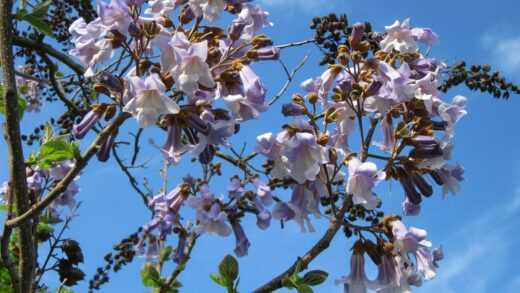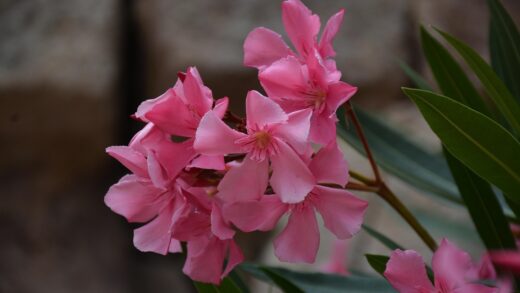Understanding the needs of a woodland classic
The English bluebell is a true gem of the woodland floor, a plant that captures the essence of spring with its delicate, nodding heads of violet-blue flowers. To successfully cultivate these iconic plants in a garden setting requires an appreciation for their natural habitat and a replication of those conditions as closely as possible. This means providing a cool, moist, and shaded environment, reminiscent of the dappled light found beneath a deciduous canopy. The soil should be rich in organic matter, mirroring the leaf litter that carpets the woodland floor each autumn. Understanding these fundamental requirements is the very first step towards establishing a thriving colony of bluebells that will return year after year, bringing a piece of ancient woodland magic to your own personal green space.
At its core, caring for English bluebells is an exercise in patience and observation. These are not plants that demand constant fussing; in fact, they thrive on a certain level of benign neglect once properly established. The key is to get the initial conditions right and then allow nature to take its course for the most part. This involves careful site selection, thoughtful soil preparation, and an understanding of their annual growth cycle. They are ephemeral beauties, gracing the garden in spring before retreating underground for a long summer and winter dormancy. This lifecycle dictates the timing of any care interventions, from feeding to dividing, ensuring that you work with the plant’s natural rhythm rather than against it.
The long-term health of a bluebell colony depends heavily on the soil structure and composition. They prefer a slightly acidic to neutral pH and a soil that remains consistently moist but is also well-draining to prevent the bulbs from rotting. Heavy clay soils can be problematic, as they can become waterlogged in winter, while overly sandy soils may dry out too quickly. Amending the native soil with generous amounts of leaf mould, well-rotted compost, or other forms of organic matter will create the ideal friable and humus-rich medium that these plants adore. This not only provides essential nutrients but also improves soil structure, aeration, and moisture retention, creating the perfect underground environment for the bulbs to flourish.
Finally, it is crucial to recognize the importance of their foliage and allow it to die back naturally after flowering has finished. The period after blooming is when the leaves are actively photosynthesizing, gathering energy from the sun to replenish the bulb for the following year’s display. Cutting back the leaves prematurely, while they are still green, will severely weaken the bulb and can lead to a significant reduction in flowering or even the eventual death of the plant. Aesthetically, the yellowing leaves may not be the most attractive feature, but their presence is a vital part of the plant’s lifecycle and a small price to pay for the spectacular floral show they provide each spring.
The annual cycle of bluebell care
The journey of caring for English bluebells follows a distinct annual rhythm, beginning in the autumn. This is the ideal time for planting new bulbs and for dividing established, overcrowded clumps. Planting in autumn gives the bulbs ample time to develop a strong root system before the onset of winter, ensuring they are well-prepared for vigorous growth in the spring. When handling the bulbs, it is important to do so with care, as they can be easily bruised. They should be planted at a depth of at least 10-15 centimetres to protect them from frost and to keep them in the cool, moist layer of the soil. Once planted, a generous top dressing of leaf mould will provide both insulation and a slow-release source of nutrients.
More articles on this topic
As winter transitions into early spring, the first signs of life will emerge as pointed green shoots pierce the soil surface. During this phase, it is important to ensure the ground does not dry out, especially if spring is unseasonably dry. While established colonies are quite resilient, newly planted bulbs will benefit from consistent moisture to fuel their initial growth. This is also a good time to apply a light dressing of a balanced, slow-release fertilizer if your soil is known to be poor in nutrients, though in most cases, an annual mulch of organic matter is sufficient. Avoid high-nitrogen feeds, which can encourage excessive leaf growth at the expense of flowers.
The peak of the bluebell season arrives in mid-to-late spring, a period that requires little intervention other than pure admiration. The plants will be in full, glorious bloom, creating a carpet of colour and filling the air with a delicate, sweet fragrance. During this time, it is best to simply enjoy the display and avoid disturbing the area. Foot traffic should be minimized to prevent compacting the soil and damaging the emerging foliage of other later-season plants that might be intermingled with the bluebells. This is the moment when all the earlier preparation and patience pays off in a truly spectacular natural performance.
Once the flowers have faded, the most critical phase of care begins: the post-flowering period. The spent flower stalks can be deadheaded to prevent seed formation, which redirects the plant’s energy back into the bulb. However, the leaves must be left completely intact. For the next six to eight weeks, these leaves will work tirelessly to create and store the energy reserves needed for the subsequent year’s flowering. It is only when the foliage has completely yellowed and withered away that it can be gently raked up and removed. This signals that the bulb has entered its summer dormancy, and the cycle is ready to begin anew with the coming of autumn.
Site selection and soil preparation
Choosing the right location is arguably the most critical factor in the long-term success of your English bluebells. They are true woodland plants, and their ideal home is in a position that offers dappled shade, particularly during the hottest part of the day. The north or east-facing side of a house, or a spot underneath deciduous trees and shrubs, is perfect. The canopy of deciduous trees provides shade in the summer when the bulbs are dormant and allows sunlight to reach the plants in early spring before the leaves unfurl, perfectly mimicking their natural woodland habitat. Avoid planting them in areas that receive intense, direct afternoon sun, as this can scorch the foliage and cause the soil to dry out too quickly.
More articles on this topic
Once you have identified a suitable location, the focus must shift to preparing the soil to create a welcoming environment for the bulbs. English bluebells thrive in a humus-rich, moist, but well-drained soil. If you are starting with heavy clay or poor, sandy soil, significant amendment will be necessary. For heavy clay, incorporating coarse grit and plenty of organic matter like compost, leaf mould, or well-rotted manure will improve drainage and aeration. For sandy soils, which drain too freely, adding copious amounts of organic matter will be key to enhancing its ability to retain essential moisture. The goal is to create a loose, friable soil structure that allows roots to penetrate easily and holds water without becoming waterlogged.
Before planting, it is highly recommended to dig the area over to a depth of at least 20-25 centimetres. This loosens compacted soil and allows you to thoroughly mix in your chosen soil amendments. Remove any weeds, rocks, or other debris from the planting area. This is also the perfect opportunity to conduct a simple soil pH test. English bluebells prefer a slightly acidic to neutral soil, typically with a pH between 5.5 and 7.0. If your soil is overly alkaline, you can work in ericaceous compost or sulphur pellets to gently lower the pH over time, creating a more hospitable environment for the plants.
Finally, after preparing the bed, a final top dressing of leaf mould or fine bark chippings is incredibly beneficial. This mulch layer serves multiple purposes: it helps to suppress weed growth, conserves soil moisture by reducing evaporation, and gradually breaks down over time, continuously enriching the soil with valuable organic content. This mimics the natural layer of fallen leaves found in their woodland home and provides a slow and steady supply of nutrients. This initial investment in thorough site and soil preparation will pay dividends for years to come, resulting in a robust and ever-expanding carpet of bluebells each spring.
Long-term maintenance and colony management
Once your English bluebells are established, their long-term maintenance is relatively straightforward, focusing primarily on maintaining the quality of their environment. The most important annual task is to replenish the organic matter in the soil. Each autumn, after clearing away the last of the summer’s debris, apply a generous layer of leaf mould or well-rotted garden compost over the area where the bluebells are dormant. This mulch will be gradually incorporated into the soil by worms and other soil life, nourishing the bulbs and maintaining the moist, humus-rich conditions they love. This simple act is the single best thing you can do to ensure a healthy and floriferous colony year after year.
Over time, an established colony of English bluebells will naturally expand and spread, both through the production of offset bulbs and by self-seeding if the flower heads are not removed. This is often a desired outcome, as it leads to the creation of beautiful, naturalistic drifts. However, in smaller garden spaces or more formal settings, you may wish to manage their spread. This can be achieved by deadheading the flowers after they fade to prevent seed dispersal and by periodically lifting and dividing the clumps. This process not only controls their spread but also rejuvenates the colony.
Division is best carried out every three to five years, or whenever you notice a decrease in flowering, which can be a sign of overcrowding. The best time to lift and divide the bulbs is immediately after the foliage has died back in early summer, while you can still identify exactly where the clumps are. Carefully excavate the entire clump with a garden fork, taking care to minimize damage to the bulbs. Gently tease the bulbs apart by hand and select the largest, healthiest ones for replanting. These can then be replanted immediately into a new, prepared location or back into the same area after enriching the soil with fresh compost.
It is also important to monitor the light conditions as your garden matures. Trees and shrubs that once provided the perfect dappled shade may grow larger, casting a denser shadow that could reduce flowering. Conversely, the removal of a tree could suddenly expose your bluebell patch to too much direct sunlight. Periodically assess the light levels and consider thinning the canopy of overhead trees if the shade becomes too deep. Maintaining that balance of light and shade is key to keeping your bluebells happy and ensuring they continue to thrive as a permanent and cherished feature of your spring garden.
Water and moisture considerations
Consistent moisture is a cornerstone of successful English bluebell cultivation, directly emulating the damp conditions of their native woodland floor. The most critical periods for adequate water are during their active growth and flowering phases in the spring. During this time, the soil should be kept consistently moist to the touch, but never saturated or waterlogged. Insufficient moisture during spring can lead to stunted growth, a reduction in the number of flowers produced, and a shorter blooming period. It is essential to monitor rainfall and provide supplemental watering if there are prolonged dry spells, ensuring the water penetrates deeply into the soil to reach the bulbs’ root systems.
The source and quality of the water can also play a role, although bluebells are generally not overly sensitive. Rainwater is always the ideal choice, as it is naturally soft and free from the chemicals often found in tap water. If you have a water butt or rainwater harvesting system, prioritize using this for your bluebells and other woodland plants. If using tap water is unavoidable, it is perfectly acceptable, but be mindful of any watering restrictions that may be in place. When you do water, it is far more effective to give the area a deep, thorough soaking once a week rather than light, frequent sprinklings, which only wet the surface and don’t encourage deep root growth.
After the flowering period has concluded and the foliage begins to yellow and die back, the plants’ water requirements decrease significantly as they enter their summer dormancy. During this phase, the soil can be allowed to dry out more, and supplemental irrigation is generally not necessary unless you are experiencing an extreme and prolonged drought. The dormant bulbs are quite resilient to drier summer conditions, a natural adaptation to the period when the overhead tree canopy is in full leaf and intercepts much of the rainfall. This reduction in watering helps to prevent the risk of bulb rot, which can occur if the dormant bulbs sit in overly wet soil.
In autumn, as temperatures cool and rainfall typically increases, the soil will naturally rehydrate. This moisture signals the bulbs to begin producing new roots in preparation for the coming spring growth. It is at this stage that ensuring good drainage becomes paramount once again. While the bulbs need moisture to break dormancy, they cannot tolerate sitting in cold, waterlogged soil throughout the winter. Therefore, the initial soil preparation to improve drainage is a crucial investment that pays off by protecting the bulbs during their vulnerable winter period and setting the stage for a healthy start in spring.
The importance of leaf litter and mulch
In their natural woodland habitat, English bluebells are beneficiaries of a continuous, natural cycle of enrichment provided by falling leaves. Each autumn, a thick blanket of leaves settles on the woodland floor, and over the winter and spring, this layer slowly decomposes. This process creates a nutrient-rich, moisture-retentive, and well-structured layer of soil known as leaf mould or humus. For the garden cultivation of bluebells, recreating this process through mulching is one of the most beneficial practices you can undertake. It provides a slow and steady supply of the exact kind of nutrients these plants are adapted to use, fostering a healthy soil ecosystem.
Applying a generous layer of mulch in the autumn is the best way to replicate this natural cycle. The ideal mulching material is leaf mould, as it most closely matches their native conditions, but well-rotted garden compost or fine bark chippings are also excellent alternatives. This mulch should be spread over the entire area where the bluebells are planted to a depth of 5-7 centimetres. This layer acts as a protective blanket, insulating the dormant bulbs from the harshest winter frosts and temperature fluctuations. It also helps to suppress the growth of weeds that might otherwise compete with the bluebells for resources in the spring.
Beyond nutrition and protection, the mulch plays a vital role in maintaining soil health and structure. As the organic matter breaks down, it improves soil porosity and aeration, which is essential for preventing waterlogging around the bulbs. It also encourages a vibrant population of beneficial soil organisms, such as earthworms and microorganisms. These creatures are instrumental in nutrient cycling and creating a healthy soil food web, which ultimately supports the robust growth of the bluebells. A well-mulched bluebell patch will have a soil that is friable, dark, and full of life, the perfect medium for these woodland treasures.
Furthermore, a consistent layer of mulch is key to regulating soil moisture throughout the year. It acts like a sponge, absorbing rainfall and releasing it slowly, which prevents the soil from drying out too quickly during dry spells in the spring growth period. Conversely, during periods of heavy rain, it can help to soak up excess water at the surface. This buffering effect creates a more stable and hospitable environment for the bulbs’ root systems. By simply providing an annual application of organic mulch, you are comprehensively addressing the bluebells’ needs for nutrition, protection, and moisture regulation in a single, easy step.


















